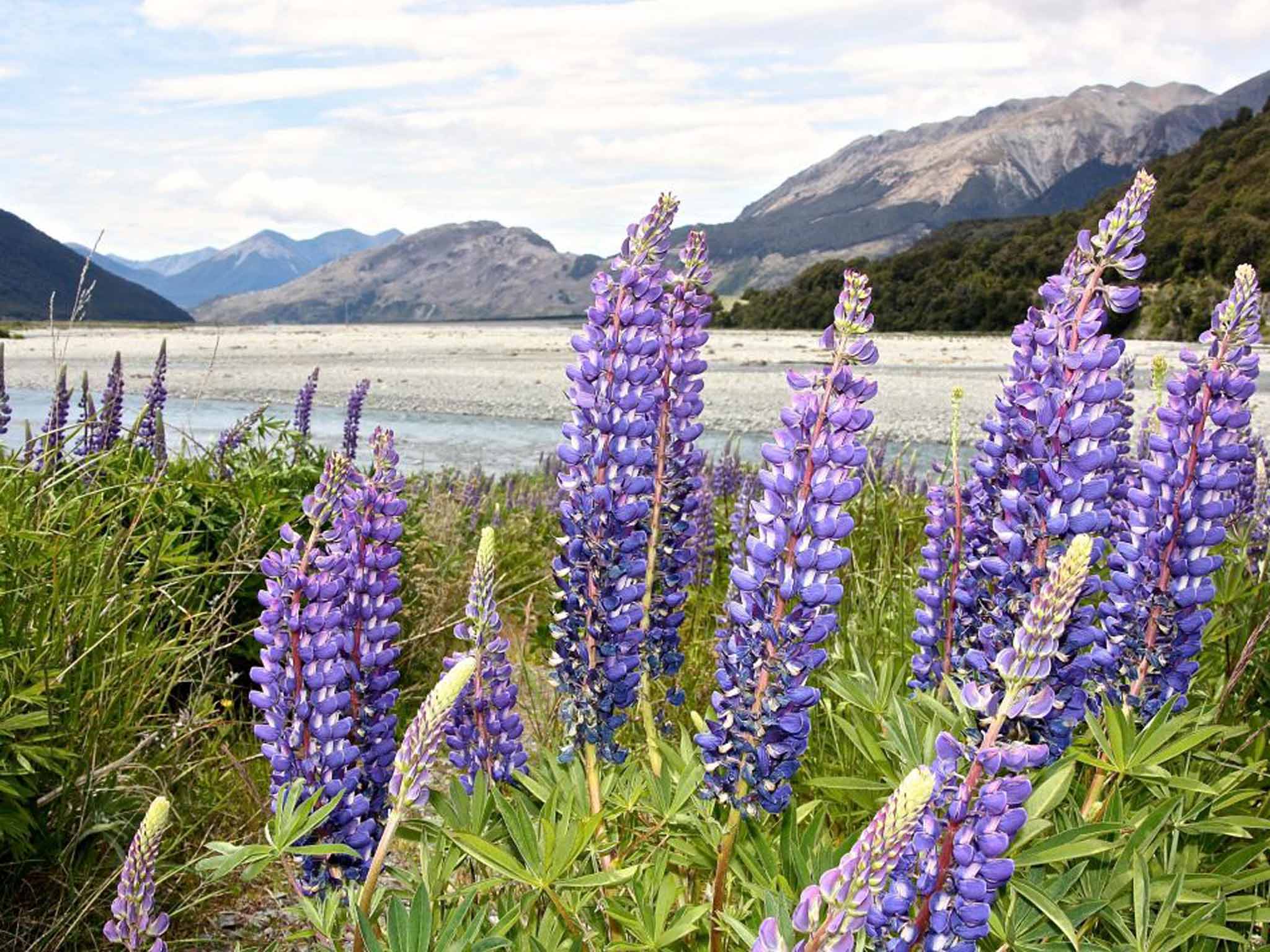New Zealand: In search of violet
One mother, two boys, on a trip around the world to seven countries to find the origin of seven colours

New Zealand is full of vast expanses of land, snow-crested mountains that hide in clouds, endless sandy shores and deserts of mallow and spinifex, lush wildernesses and deep glacial fjords. It is overwhelmingly green and not a land with which you associate the colour we are looking for: violet, the last in the rainbow spectrum.
We have come to the lavender fields of South Island to stand among the trim, cultivated rows of purple flowers. The Pacific Blues sway in the wind that comes down from the Blenheim hills. The rising sun lights up the lavender in swaying bands of white light and cloud-cast shadows.
"Perhaps with a little lemon," Ruth, the owner of French Fields Farm House tells us, "you might extract violet, but people grow lavender for its scented oil, not for its colour."
Onwards then to the shore, to the rocky north coast of Abel Tasman National Park, in search of a sea snail, the murex, that can weep violet tears. We swim out into deep, icy waters of aquamarine and navy blue. A sting ray glides past, a snapper, green dots flickering on its scales. We dive down a metre and a half and dig off the pale, coiled whelks that stick to the shoreline. Back up in the open air, we squeeze them between our thumb and forefinger, and sure enough they secrete their violet tears. It doesn't fade and grows brighter beneath the hot sun and even brighter against the gusty wind.
We drive southwards, across valleys of yellow broom and purple, swaying lupins, down to the tip of New Zealand, at Milford Sound. It is one of the wettest places on earth and we stand on the bow of a boat, tipping back our heads as we glide beneath cascading waterfalls, drinking the clear, icy waters. It is here, on the tree-lined shores, that we find a lichen, the Sticta coronata. Dried and leafy clumps of it cling to silver birch and beech trunks. It's gold and autumnal, until it is placed in vinegar and lemon, to extract dyes of pale violet and deep purple. The last colour in the rainbow spectrum, as we stand on the very edge of the world.
Lindsay Hawdon travelled with Discover the World (01737 214291; discover-the-world.co.uk), which offers tailor-made self-drive itineraries in New Zealand. The Rainbow Hunters are raising money for War Child (justgiving.com/Lindsay-Hawdon) as they travel. To read more about their journey visit therainbowhunters.com
Subscribe to Independent Premium to bookmark this article
Want to bookmark your favourite articles and stories to read or reference later? Start your Independent Premium subscription today.

Join our commenting forum
Join thought-provoking conversations, follow other Independent readers and see their replies